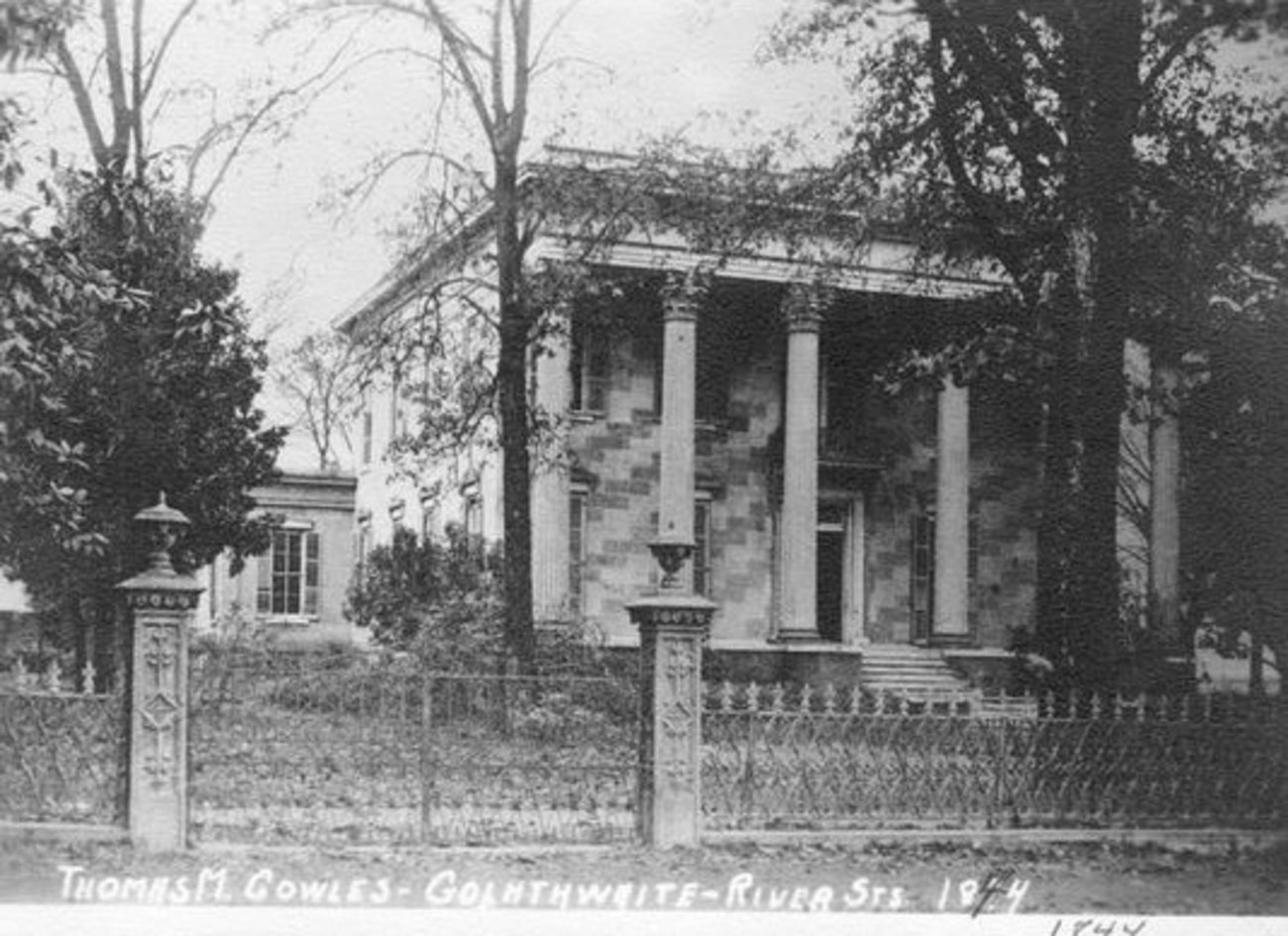| City/Town: • Montgomery |
| Location Class: • Residential |
| Built: • 1856 | Abandoned: • N/A |
| Status: • Burned Down |
| Photojournalist: • David Bulit |
Table of Contents
Thomas M. Cowles
Major Thomas Merriwether Cowles was born in 1794 in Richmond County, Georgia, the son of William Marston and Anna Merriwether Cowles. He was also a descendant of Richard Cowles, an early settler who owned land as early as 1614 near the settlement of Jamestown, Virginia, the first permanent English settlement in the Americas.
Thomas was a successful businessman who had accumulated a large estate due to his various business ventures in and around the budding city of Montgomery, Alabama. It’s not known exactly when Cowles came to Montgomery, but in a collection of letters written by General Thomas S. Woodward and published as Woodward’s Reminiscences; A Personal Account of the Creek Nation in Georgia and Alabama in 1859, Thomas M. Cowles was named as part of the group accompanying General Marquis de Lafayette, the last surviving general of the Revolutionary War, to Montgomery on April 2, 1825.
Cowles made quite a fortune early on selling land to wealthy prospects. He was notable for being a large slave owner and having several large plantations outside of Montgomery. In 1826, he married Elizabeth Ware, sister of Dr. Robert James Ware, and built their home on the Cowles plantation located four miles east of Montgomery in what is now known as Mount Meigs. Although it was likely a one-story plantation house of an early pioneer style, it must have been more than acceptable for the Cowles.
According to the History of Alabama and Dictionary of Alabama Biography published in 1921, when President Millard Fillmore visited Montgomery on April 5, 1854, he spent the day on Cowles’ plantation. He was the guest of honor at a barbecue at which the neighboring planters and friends from the city were present.
Montgomery and West Point Railroad
In 1833, the Montgomery Railroad Company was incorporated by Thomas M. Cowles along with many other influential and successful planters, merchants, and industrialists including General John Scott, Abner McGehee, William B. S. Gilmer, Benajah S. Bibb, Charles T. Pollard, John Goldthwaite, William Sayre, and P. D. Sayre, among many others. These investors contributed not only funding but also land in the construction of a track from Montgomery to West Point, Georgia.
The company ran into various financial troubles in the following years making it necessary for the company to mortgage for $50,000. The railroad had not reached Franklin, Alabama, just 32.4 miles east of Montgomery until June 1840 however, earning a meager $500 that year. Business was so bad that many of the investors decided to drop out wherein the company was leased by Abner McGehee. Due to more financial troubles, the railroad was sold under foreclosure on July 9, 1842. It was purchased by Charles T. Pollard and eight other men and reorganized as the Montgomery and West Point Railroad Company on February 13, 1843.
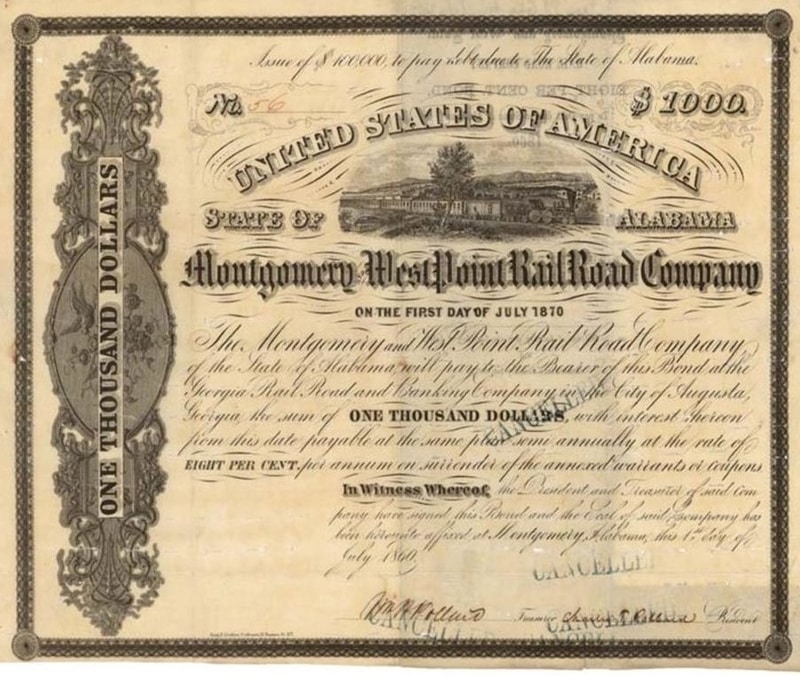
The company’s difficulties continued and by 1845, there were only five stockholders left—Abner McGehee, Charles T. Pollard, Thomas M. Cowles, Alfred V. Scott, and William Taylor. They sought aid from the state, securing a $116,000 loan by mortgaging their private property. With this funding, it was agreed that the best course of action in carrying work was to purchase eighty-four slaves from Virginia for $42,176.20. The railroad was finally completed to West Point on April 28, 1851. Three years later the Atlanta and West Point Railroad was completed, connecting Montgomery to the East Coast.
By July 1852, the railroad operated daily, earning profits up to $130,000 a year. This success though was relatively short-lived. During the Civil War, the railroad was raided in July 1864 by 2,500 Union cavalry troops under the command of Lovell Rousseau. Rousseau’s forces managed to destroy 30 miles of track, take and destroy a large number of supplies at Opelika, and burned the railroad stations and warehouses in Montgomery and West Point.
In April 1865, James Wilson led an extraordinarily large force of 13,500 Union troops through Montgomery to Columbus, Georgia, destroying the remaining rolling stock of the railroad as well as tracks, bridges, and warehouses along the way. The Montgomery and West Point Railroad filed for bankruptcy and merged with the Western Railway of Alabama in 1870, and continued to struggle during and after reconstruction.
In his later years, Thomas M. Cowles partnered with Lorenzo Nathan Woodruff Sr. and formed Cowles, Woodruff, & Co., a dry goods mercantile company. After Woodruff’s passing in 1855, Cowles would continue the business as Cowles & Ledyard along with his business partner Elisha Denison Ledyard. Along with Abner McGehee, Cowles also co-founded the Alabama Bible Society in 1854, a non-profit organization dedicated to promoting “…the circulation of the Holy Scriptures in their common version, in all ordinary ways…“
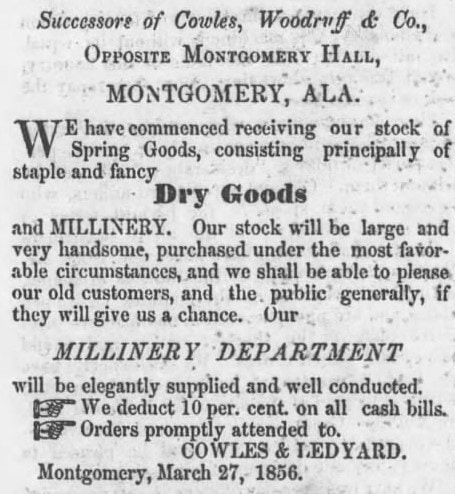
Cowles Mansion
In 1856, Thomas Cowles had a mansion built at Goldthwaite and River Streets. The front gates of the mansion opened into a small triangular park that gently sloped down to Moulton Street. In a newspaper article published in the Montgomery Advertiser on January 26, 1908, the mansion is described as such:
When, a few years before the beginning of the War between the States, Thomas Cowles built the mansion, he spared neither expense nor difficulty to make it as fine as possible. Its high-ceiled rooms of great proportions, its beautiful halls were adorned with splendid stained glasses, mirrors, friezes and paintings, all done by the best artists, this and the other side of the Atlantic. Even the quarters of the servants and the barns and stables were constructed in the richest manner.
And the expenditure of money was not futile; it made of the Cowles mansion the centre of social life in Montgomery. There were the great men and the lovely women of Alabama entertained; thither gathered together the notables of this State when they met the great folk of other States. What the entire building cost is unknown: $100,000 is a minimum, half as much again would more nearly approach the true total. As it was constructed, so it was furnished and maintained.
The great grove within which it stood, in other days, and the house itself had the undivided care of fifteen servants, and its hospitality was a standard of lavish entertainment.
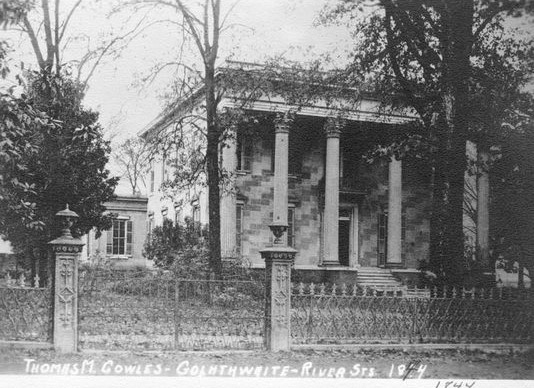
It was at this mansion that Thomas Merriweather Cowles died on March 20, 1857. With no heirs, the estate was divided up between his widow, the children of his younger brother, Dr. John A. Cowles, and his sister, Martha Cowles.
It’s interesting to note that while Thomas M. Cowles didn’t have children of his own, he did have a nephew by the name of Thomas W. Cowles who he raised from the age of four after the death of his father. His nephew went on to marry Laura Shorter of Eufaula in 1856 and enlisted in the Confederate Army during the Civil War having held the rank of quartermaster throughout the war. He died at his residence at 121 South Court Street in Montgomery and is buried at the Shorter family cemetery.
The mansion went into the hands of his widow. She married Colonel Edmund Harrison and the two lived in the mansion for several years. In 1882, the property was put up for public auction for division amongst Thomas Cowles’ heirs with William H. Graves purchasing the home thereafter in 1884. Graves was a practicing lawyer in the city of Montgomery who eventually became involved in the growth of the new city of Birmingham.
After being appointed president of the Birmingham Trust & Savings Company, Graves sold the mansion to the Alabama Midland Railway in 1889 before moving to Birmingham. The rooms were converted into office spaces and from then on, the mansion served as the general office for the railroad. Steam shovels were used to cut down the hill the mansion was situated on for tracks to be constructed on the left and right sides of it.
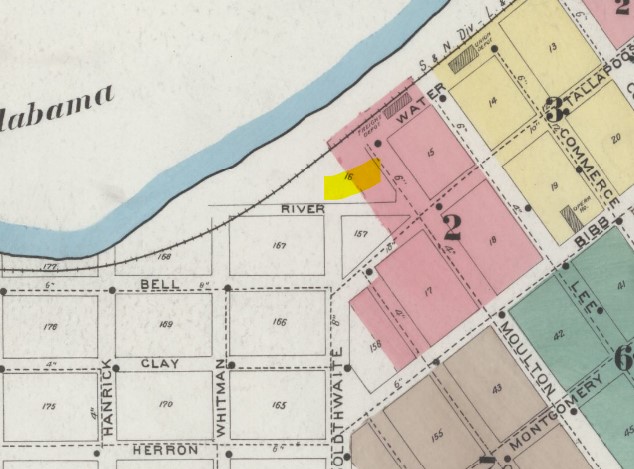
Demolition
The Alabama Midland Railway was acquired in July 1890 by Henry B. Plant of the Plant System and merged with the Savannah, Florida & Western. The Atlantic Coast Line Railroad gained control of the Plant System on July 1, 1902. The Montgomery Union Station was built just four years earlier and of all the railroads serviced there, the Atlantic Coast Line was the only one without its own freight depot. This was around the time that River Street was paved over for the addition of more railroad tracks.
The mansion was abandoned with many believing it wasn’t long before it would be demolished in the name of progress as it stood silently amid the Atlantic Coast Line railroad yards. It wasn’t until December 1913 that the mansion was destroyed in a fire, described as a phantom on the lonesome knoll, its columns blackened by smoke. An article in The Montgomery Advertiser following the fire reads: “Little by little, it has dwindled from an antebellum mansion to a crumbling mass of worthless stone, only its ghost-like columns remaining to haunt progress in her whirling, swirling dream.” Its remains were soon demolished and the small knoll it sat on was shoveled away to be replaced by additional tracks.
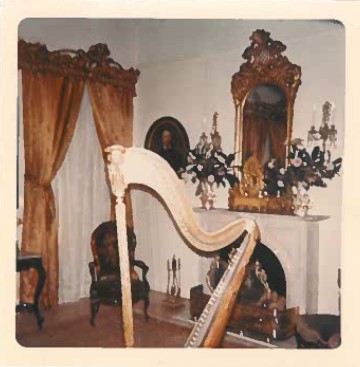
Four gold leaf window cornices were salvaged by George D. Mentz Sr. whose son eventually donated them to the Montgomery Museum of Fine Arts in 1961. According to museum officials, the cornices went missing sometime around the mid-1970s when the museum converted from a general museum to an art museum. Many historical items were lent to historic sites around the state, but the loan inventory from those sites does not have the cornices listed. The columns were saved and used in the renovation of the Brame House located at 404 South Hull Street in Montgomery.
The Brame House was constructed in 1897 by William Whitman Brame, a wealthy business and prominent cotton broker. The house was originally a single-family residence but was expanded upon after his family inherited the home after his death. It was added to the Alabama Register of Landmarks and Heritage on January 29, 1980, and to the National Register of Historic Places on September 17, 1980. By this time, the house had fallen into disrepair, and attempts were made to restore it by the law firm that owned it, but the cost was too great. The house was demolished in 1990 along with the last remnants of the Cowles mansion.
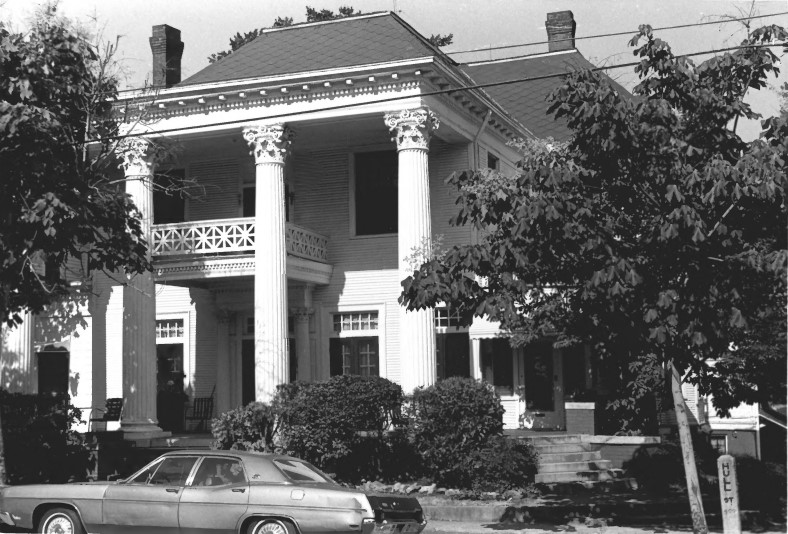
References
The Montgomery Advertiser. (1908, April 14). Thos. Cowles Dead
The Montgomery Advertiser. (1913, December 14). Old Cowles Home Soon To Become Only A Tradition
The Montgomery Advertiser. (1915, December 12). Halcyon Days of the Cowles Mansion — A Southern Ideal
The Montgomery Advertiser. (1904, July 20). Antebellum Palace
The Montgomery Advertiser. (1903, November 12). To Raze Cowles House

